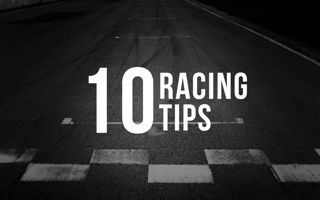 We’re our own worst critics. When it comes to beating our own personal best we’ll do whatever it takes to make it happen. Racing is no different. We’ve put together some best practices whether you’re just starting out or trying to shave some seconds off your lap times.
We’re our own worst critics. When it comes to beating our own personal best we’ll do whatever it takes to make it happen. Racing is no different. We’ve put together some best practices whether you’re just starting out or trying to shave some seconds off your lap times.
Track Knowledge – If it is your first time driving the track configuration you want to take a look at the flow of the track before you go out for your first race. You want to find and visualize the racing line. Knowing the track will help you in all areas of racing. Feel free to ask any RPM Raceway employee for tips or a track map.
Best Lap Time Mindset – Before you go out for your race remember, you are racing for fastest LAP time (unless in the main event of a race package). You may pass other racers over and over but if one racer sets 1 faster lap time than all of your lap times they will place higher. Try to space yourself out from other racers on the track to get a clean lap. If there is a fast racer on the track try to follow their racing line and identify their brake markers and throttle lift points for turns that do not require braking. Try to match their speed going around the track but DO NOT go past your own limits.
Left Foot Braking?! – One of the biggest challenges you will face is using the left foot for braking. In the go kart you are forced to use your left foot. In the racing world, most all professional racers use left foot braking. When done properly, momentarily overlapping both pedals makes you faster and comes in handy when you need to set the front while accelerating out of a turn when the front begins to understeer. This does not mean you can attack a turn full throttle while braking at the same time. This skill takes time to develop and the more seat time you get, the smoother this motion becomes and lap times improve dramatically.
Braking Technique – Go karts do not use front brakes. This is key to understanding how to keep the kart stable during braking. Generally, when attacking a corner that requires braking you want to do so in a straight line before the corner. More specifically, you want to scrub off just enough speed so that when you start to turn into the apex of the turn you are already off of the brakes. Keeping the kart’s balance stable is key. Braking into the turn will upset the kart’s balance, REMEMBER the brakes are only in the rear and using them during turns will load the weight to the front end and cause the rear to slide.
Ocular Driving– Most novice racers tend to look at what’s right in front of them and not far enough ahead. The technique of ocular driving shifts the racer’s focus from where they are to where they want to be. As you attack the track you want to pick up your next brake point in advance. As you approach the braking point you want to start looking for your turn-in point. As soon as you start braking you want to start looking ahead to the apex as you peripherally detect the turn-in point. As you turn in your eyes should be looking down the track at the next section. This will create a smooth flow in your driving and being smooth is what leads to faster lap times. At the max speed of 45 MPH you are traveling 66 feet per second and fixating your vision on what’s right in front of you will cause you to react instead of planning and acting ahead of time to be where you want to be.
Throttle Lift Technique– Also known as ‘engine braking’ is the technique of using the friction from the motor to slow down. All it involves is taking your foot off the throttle and the motor does the rest, no braking required. When can you use engine braking? When you identify turns on the track that don’t really require you to use your brake but do require a slight decrease in speed in order to stay on the racing line and avoid hitting the barriers. It shifts some of the weight to the front tires opening up some contact patch and scrubs off just enough speed to go through a corner at its highest possible velocity allowed without losing grip or momentum by braking needlessly. You want to use throttle lift right before you turn into the apex. Needless to say not all turns allow for just throttle lift. You can also use throttle lift when you’ve entered a turn a bit too fast and need to correct slight understeer.




 arrive and drive
arrive and drive